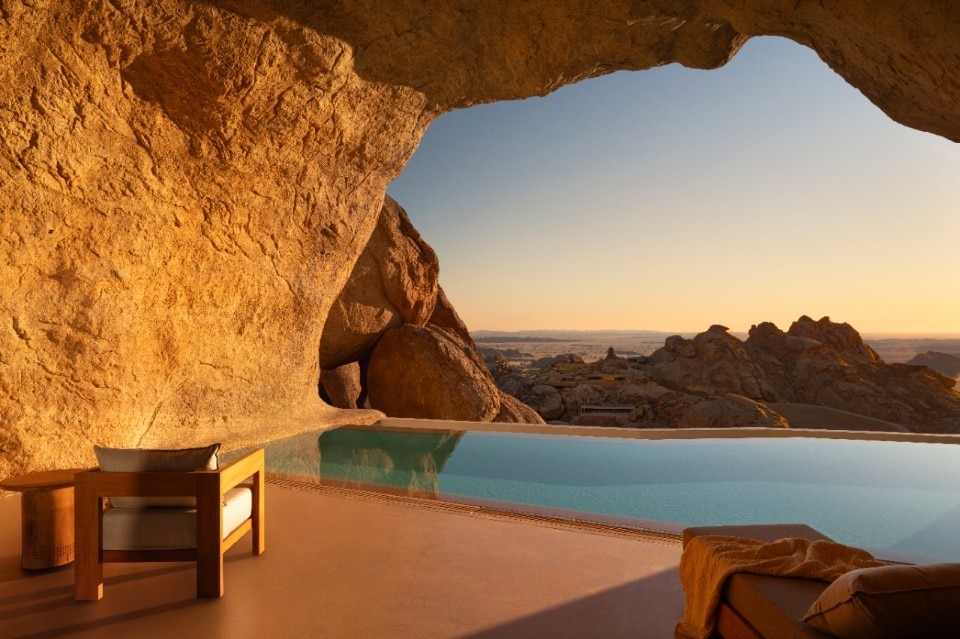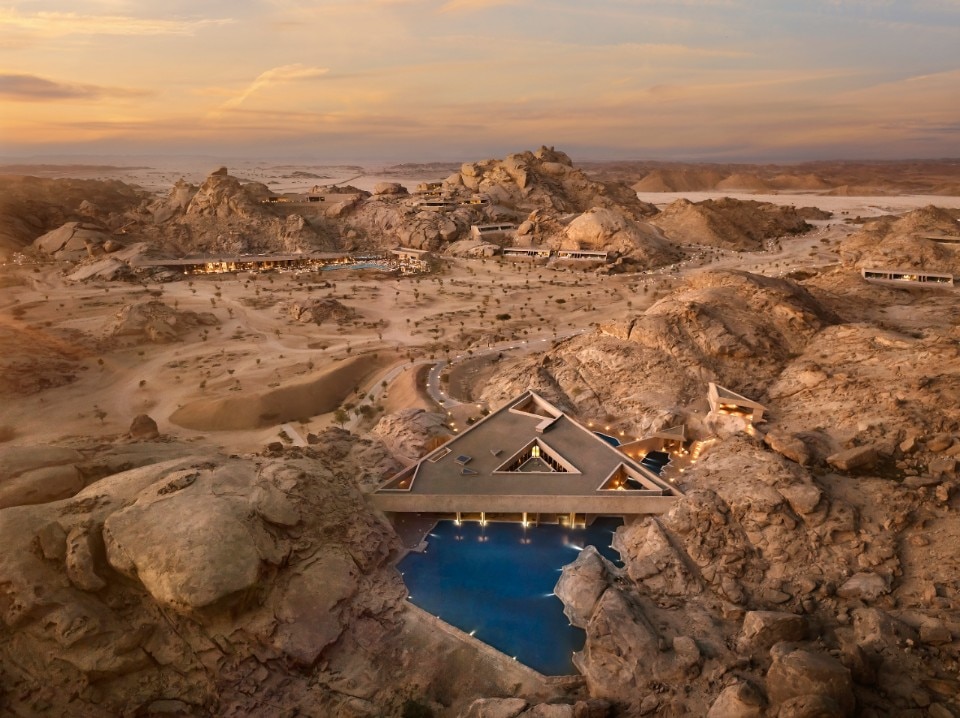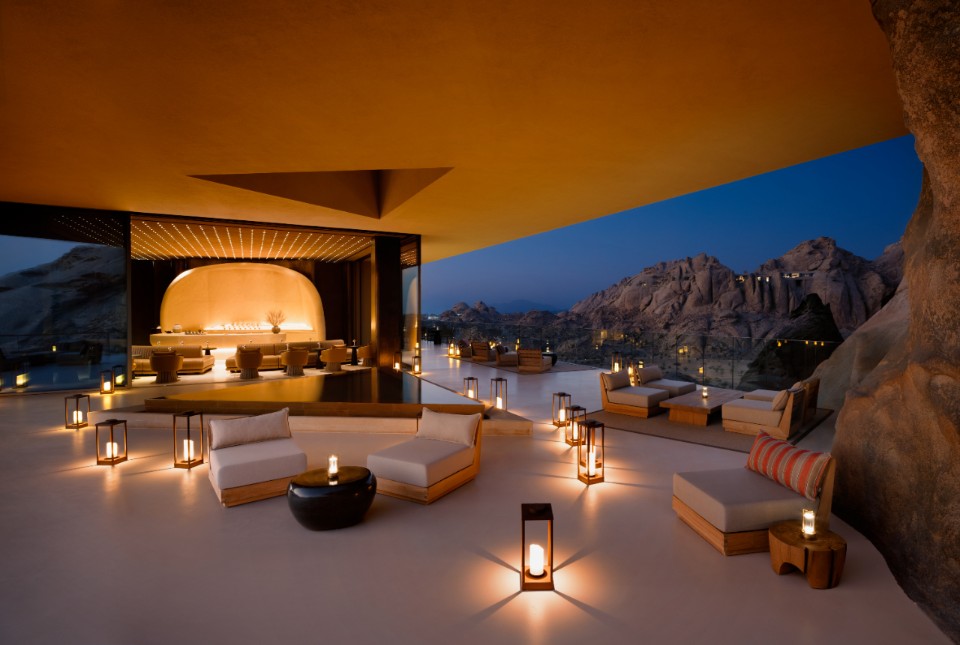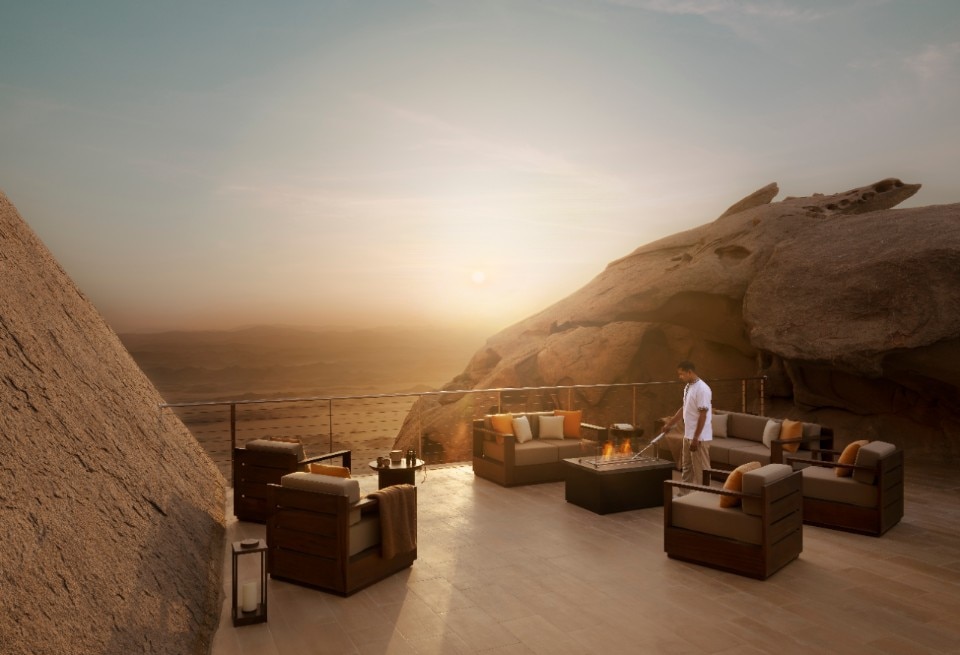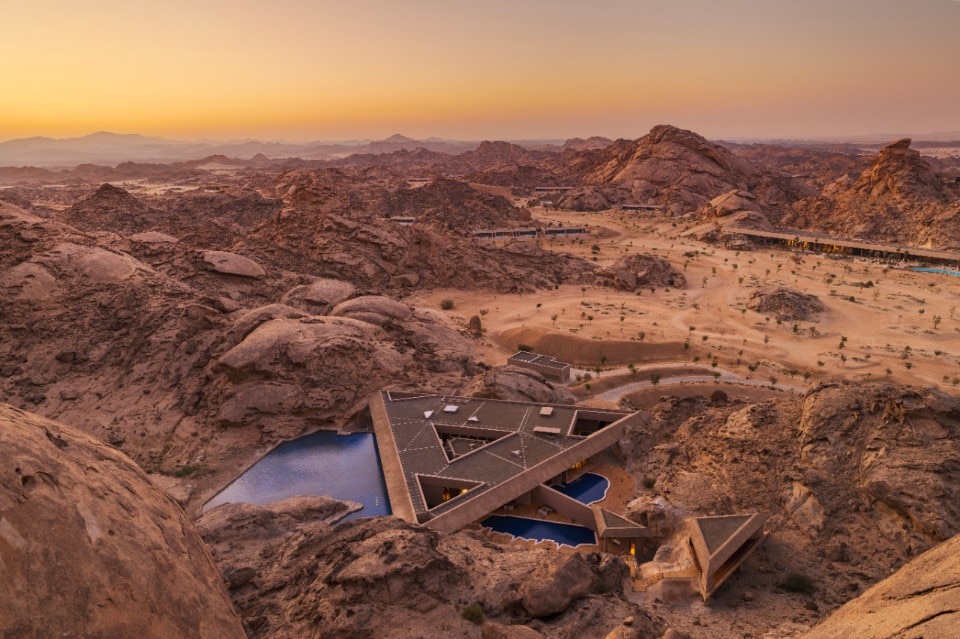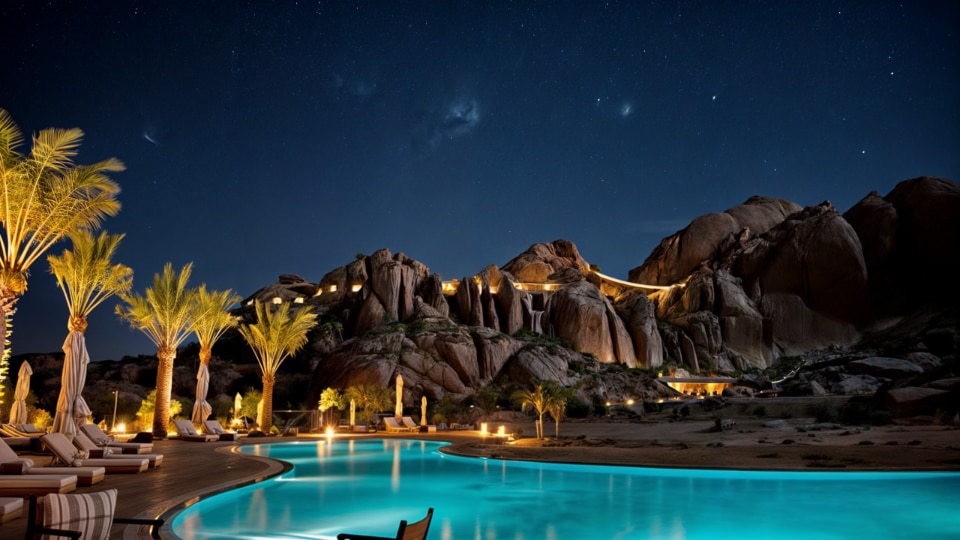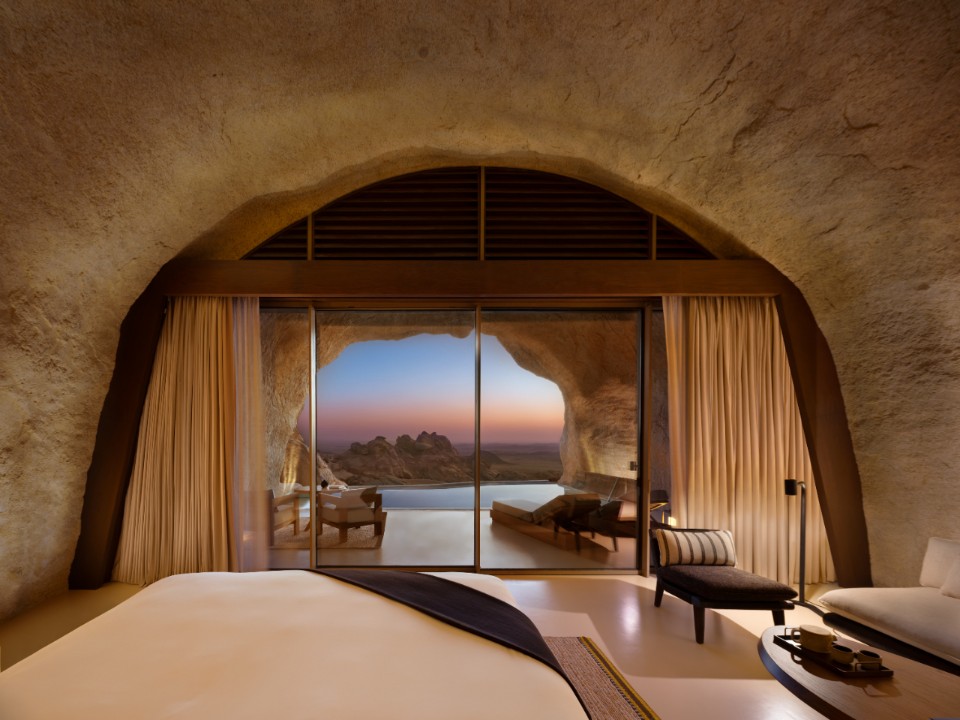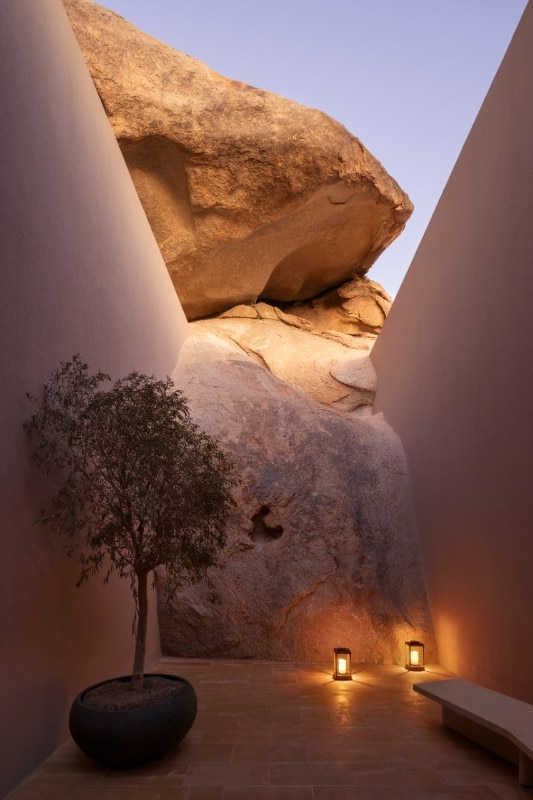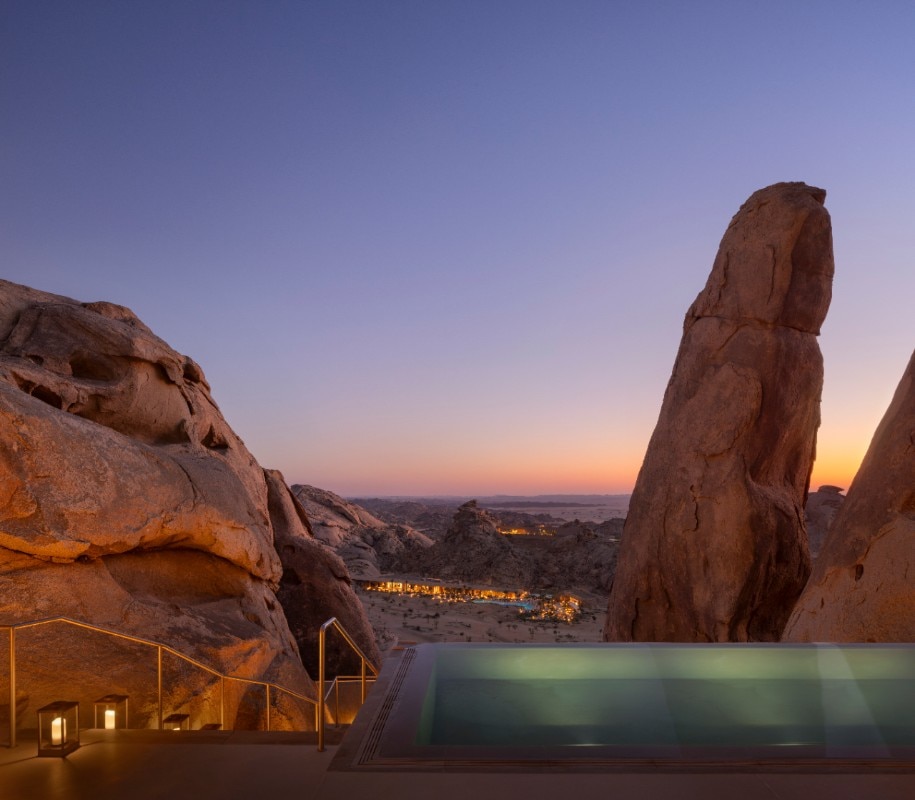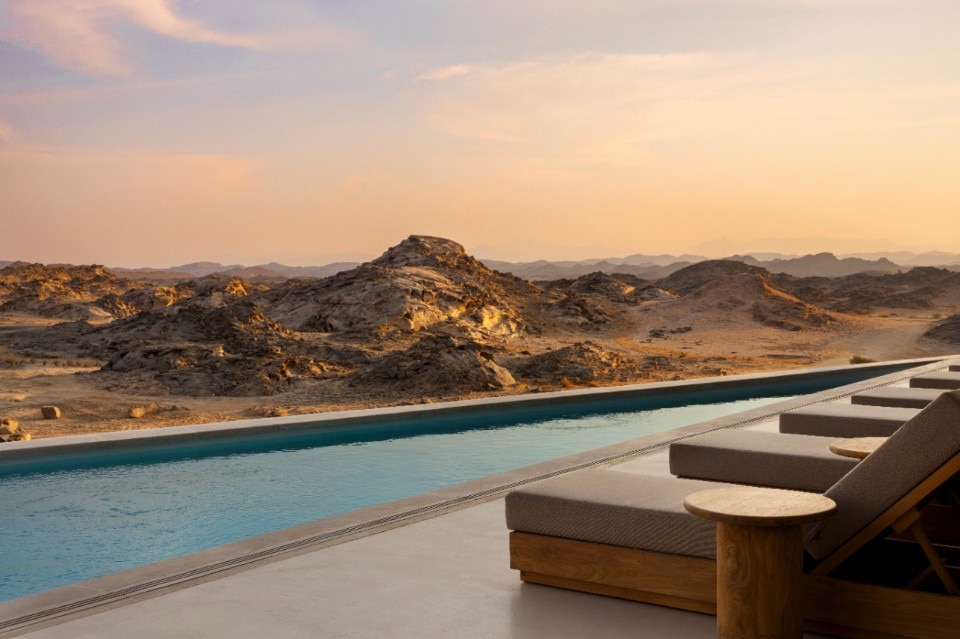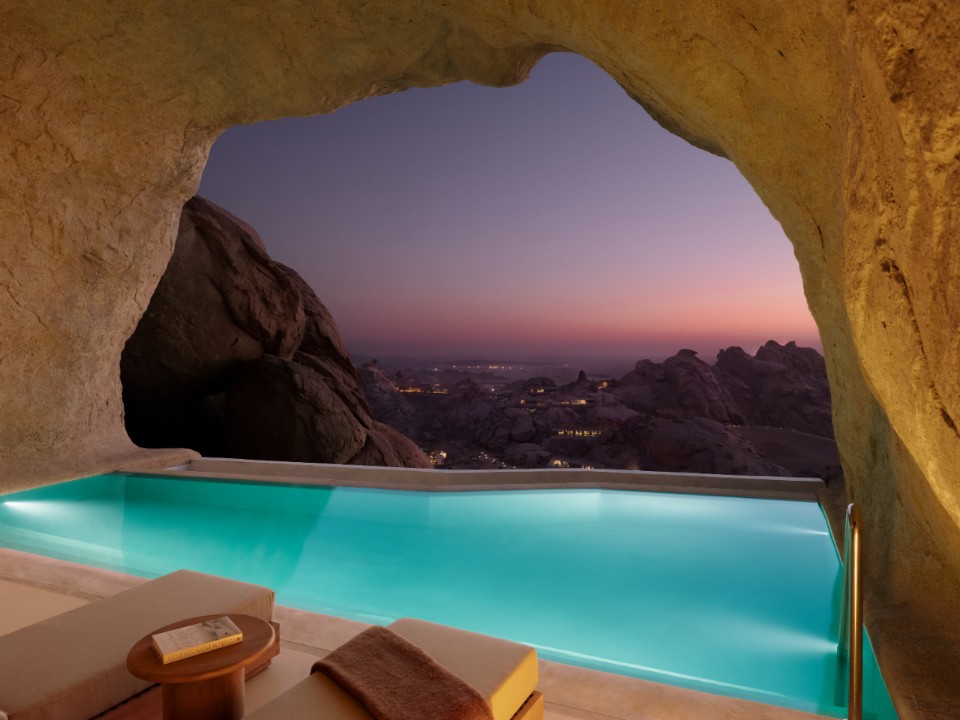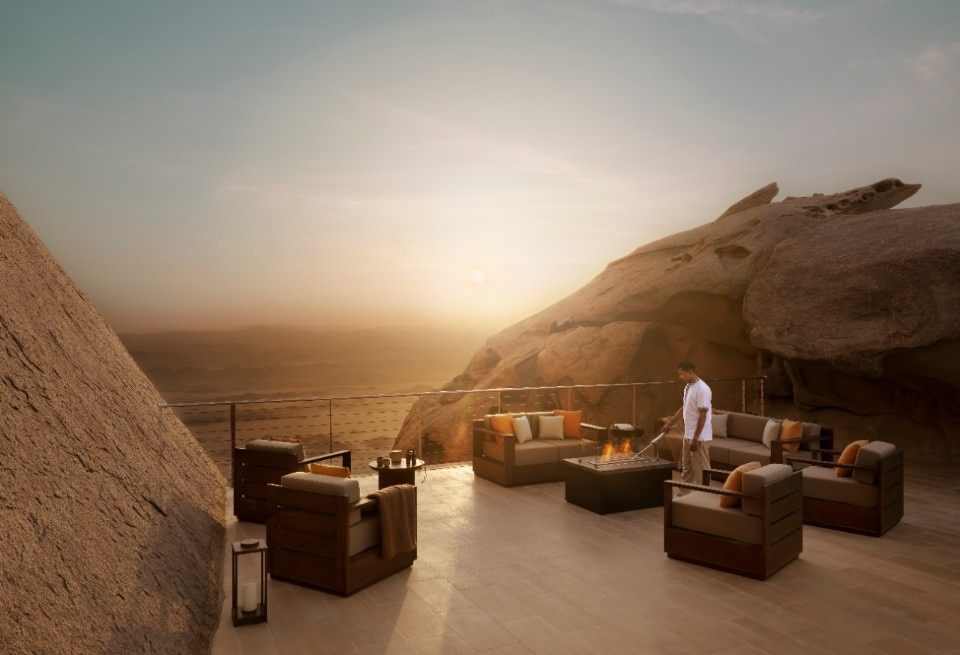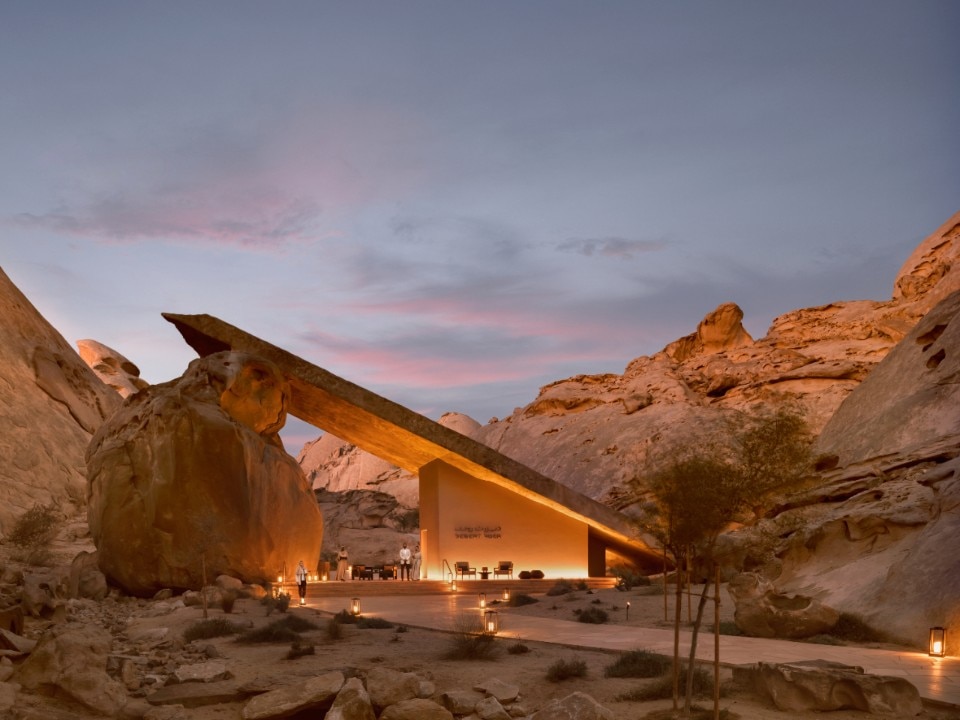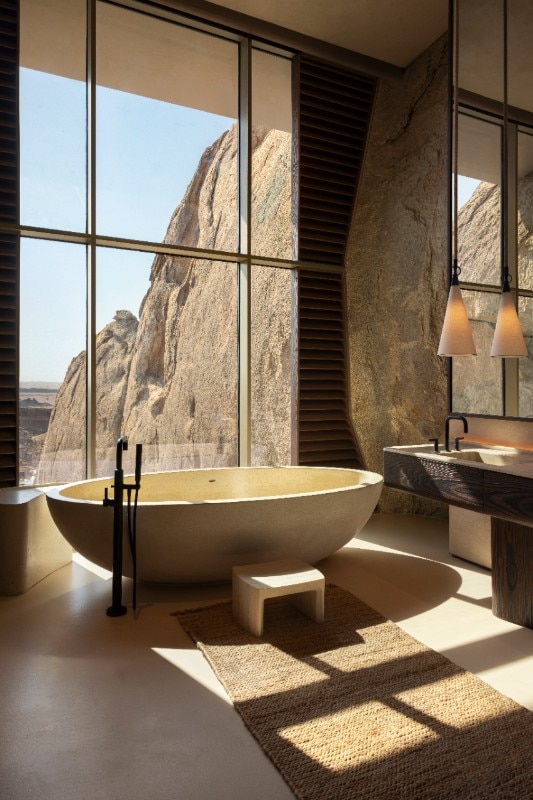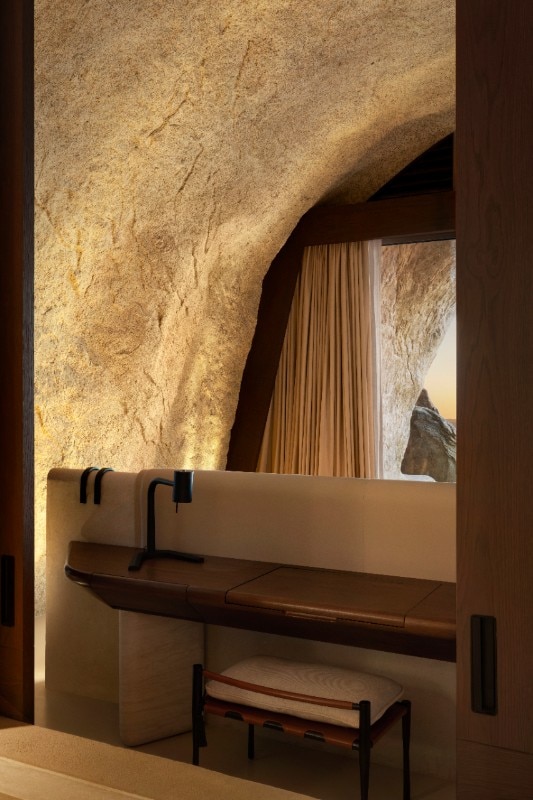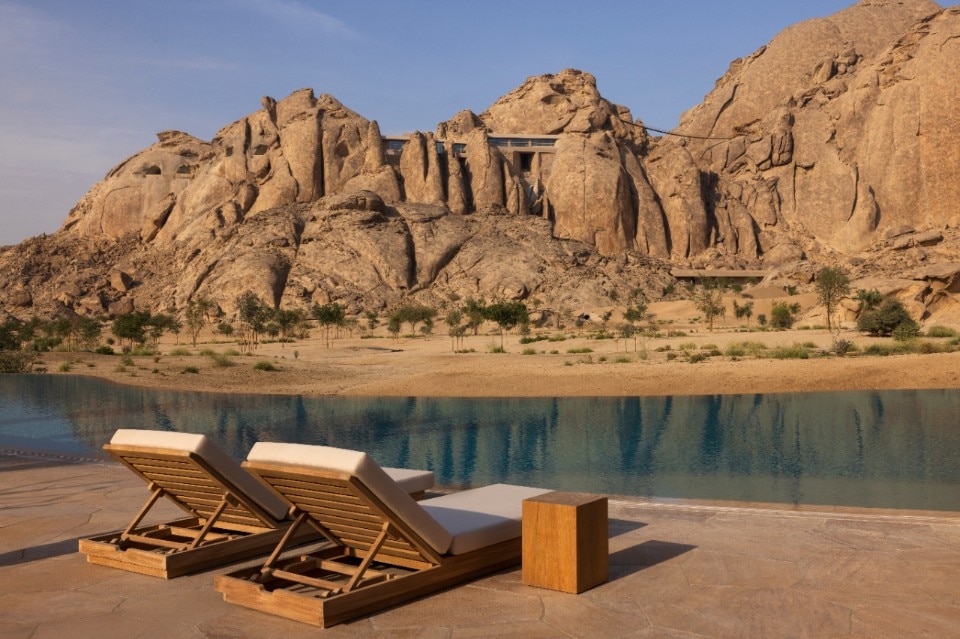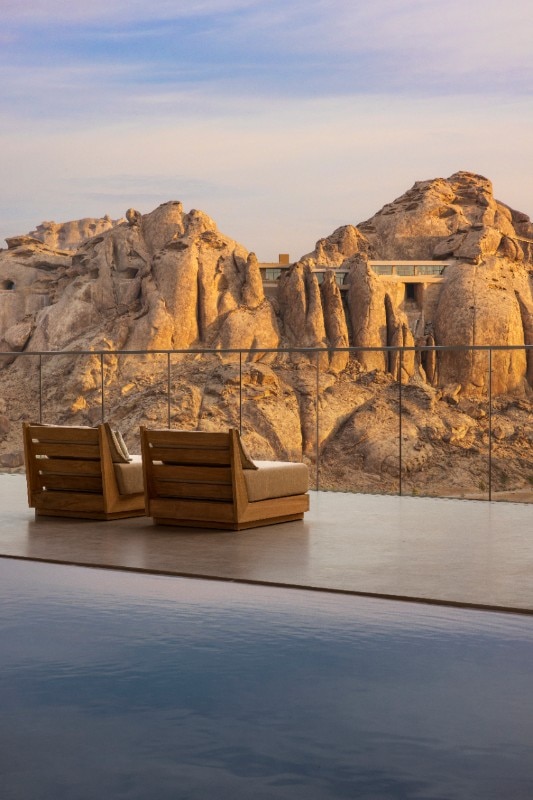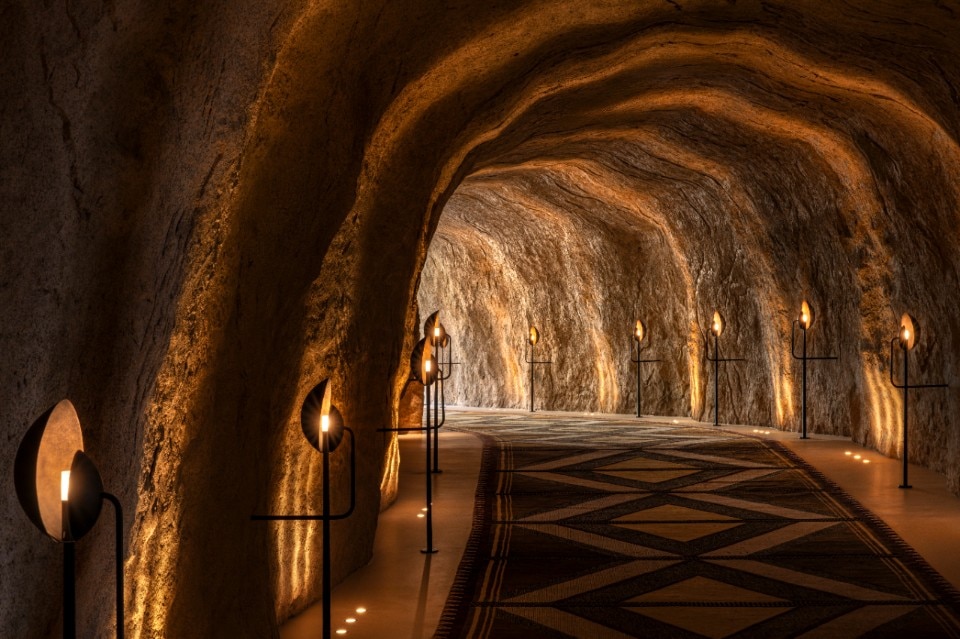Luxury tourism is enriched by a new ‘’gem‘’: it is the Desert Rock designed by Oppenheim Architecture and located in the Hejaz Mountains in Saudi Arabia. The complex joins the prestigious Shebara Resort by Killa Design within the Red Sea Global programme, a more ambitious territorial marketing plan aimed at consolidating the country's attractiveness on a global level, by enhancing its rich environmental and cultural heritage. The programme includes the launch of six exclusive Red Sea destinations along the west coast of Saudi Arabia: from the first resort opening in 2023, to a total of 50 resorts planned by 2030.
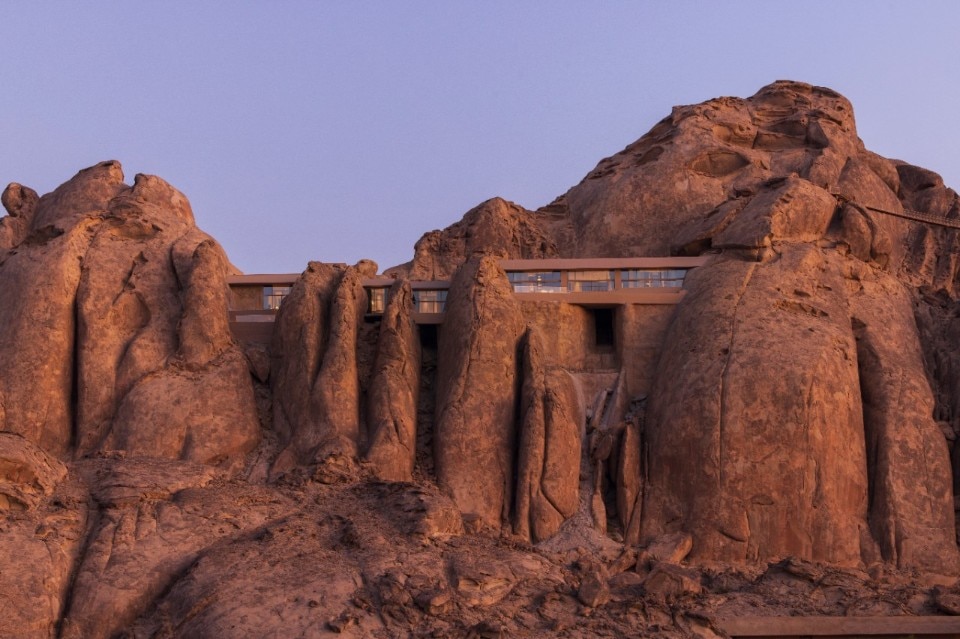
Desert Rock belongs to the mountainous landscape, as if it had always been there. And indeed, the architecture is inspired by the vestiges of the Nabataean civilisation, which once inhabited the Arabian Peninsula and is known for its rupestrian architecture.
The complex, covering an area of 30,000 square metres, offers immersive experiences in a harsh yet dazzlingly beautiful natural setting, with villas with private pools on the route of ancient rivers (Wadi Villas) or rising on the top of rocky heights (Cliff Hanging Villas), refuges nestled in the mountain massif overhanging the valley (Mountain Cave Suites and Mountain Crevice Villas) or princely dwellings hidden away to provide maximum privacy.
Notable is the sensitivity to reducing environmental impact and weaving a dialogue with the context. Achieving LEED Gold status, the destination was not only constructed using material extracted on site but also features an innovative water retention and distribution system, alongside other state-of-the-art technologies andoperational procedures. Meticulously integrated into the undulating terrain, the different structures are laid-out and illuminated to not obstruct the setting’s sweeping vistas.
“There’s a spiritual, almost metaphysical, quality here; a perceptible sensation not experienced elsewhere,” says Paolo Ferrari, principal of the eponymously named practice tasked with the comprehensive interior design of the destination (64 expansive suites and villas as well as a full offering of public amenity spaces). “We observed and responded to the strikingly elemental characteristics of the immediate environs while also channeling the region’s entrenched history in artifacts reformulated in varying scales of intervention carried out using reinvigorated local craft traditions”.
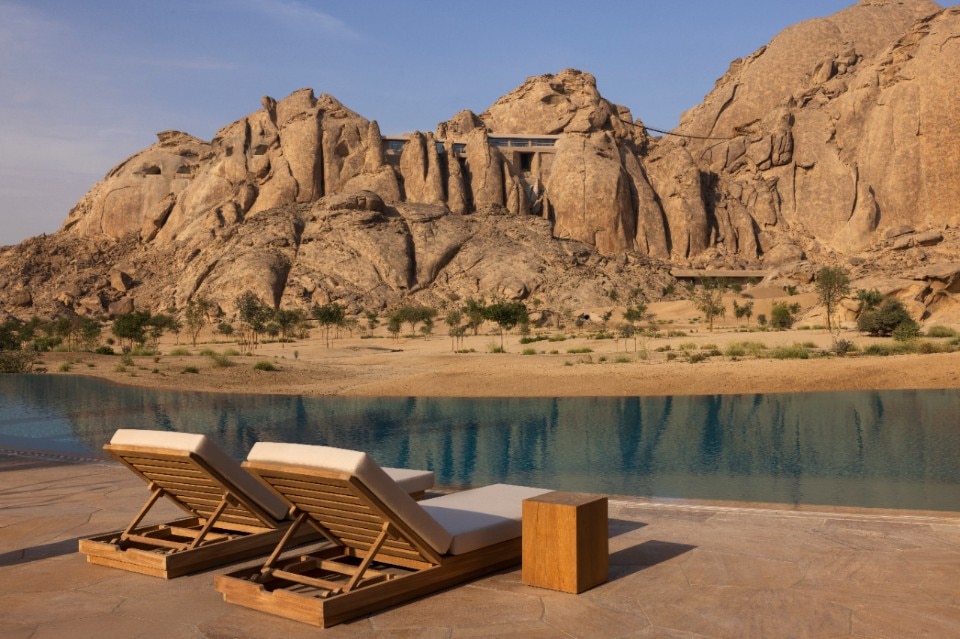
The interiors—many with rock formations breaching the conventional delimitations of indoor and outdoor space—are comprehensively intertwined with the Genius Loci. “We designed these environments to recede so that they never overwhelm or detract from the site’s inherent natural beauty,” Ferrari describes. Concrete, plaster, limestone, bronze, and wood—both charred and sandblasted—are implemented in vastly different yet complementary ways: everything from built-in sunken sofas and bespoke luminaires to three-dimensional wall finishing and custom designed sand-cast hardware.
“Desert Rock Resort is about craft, the handmade, the honesty of materials, and a deep spiritual connection to site”, Ferrari concludes. “It’s about minerality, authenticity, and reconnecting with the most elemental qualities of nature".


